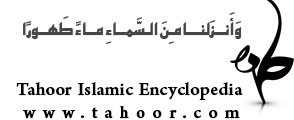
some issues about the number of verses, The names of the chapters and calligraphy and Orthagraphy of the Qur’an
The number of verses in the Qur’an
The enumeration and delineation of the verses date from the time of the Prophet. In a saying the Prophet mentions ten verses from the “Family of “Imran,” seven in the chapter “al- Fatihah” and thirty in the chapter “The Sovereignty.”
There are six views concerning the total number of verses in the Qur’an, as related by al-Dani. some have said that the total is 6,000, some 6,204 and some 6,219. From these six estimations, two are from the reciters of Medina and four from the other areas to which the “Uthmanic copies were sent, namely, Mecca, Kufa, Basra and Sham.
All these scholars support their claims by traditions reaching back to the companions and thus not directly linked, in a chain of transmissions, to the Prophet. Such traditions are called mawquf in the science of the traditions.
From Medina, those who specialized in enumeration and delineation of the verses, were Abu Ja’far Yazid ibn al-Qa’qa, Shaybah ibn Nassah, Ismail ibn Ja’far ibn Abi Kathir al- Ansari, Ibn Kathir, Mujahid Ibn “Abbas, Ubayy ibn ka’b, Hamzah, al- Kisa’I, Khalaf, Ibn Abi Layla, Abu “Abd al- Rahman al- Sulami, Ali, Asim ibn al- Ajjaj al- Jahdari, Ibn Dhakwan, Hisham ibn ‘Ammar.
The reason for the different opinions concerning the total number of verses is related to the method of delineation and separation of the verses and letters.
The names of the chapter
The division of the Qur’an into chapters, like its division into verses, is mentioned in the Qur’an itself. In several places God uses the actual words surah and ayat. In ( XXIV:1) He says “(Here is) a surah which we have revealed .” in “ Repentance” verse 86, “And when a surah is revealed. “ in “ The Cow” verses 23, “ Then produce a surah like it… “ and other similar verses.
The name of the chapter is sometime derived from a name or from occurring in the chapter or from a subject treated by the chapter, for example “The Cow”, “The Family of “Imran “, The Night Journey “ and “ The Unity”. We may note here that in the old Qur’ans it is usual to observer the following at the beginning of each chapter. “ The surah in which the Cow is mentioned “ or the surah in which the family of Imran is mentioned.” Some times the chapter become known by its first phrase, take for example, the chapter “Read in the name of your Lord” ( or “the Clot”) or the chapter, Truly we revealed it, (The Night of Power) or the chapter “Those who disbelieve” ( also called “The Clear Proof).
Sometimes the chapter becomes known by a certain posi-tion or quality it possesses,thus the chapter .” Opening of the Book” or “ The Mother of the Book” or “The Seven Oft- repeated verses”(all describing the first chapter, or the “al-Fatihah’). The chapter” The Unity “ is also called by the name “al- IkhIas” (meaning that it describes the absolute unity of God). or by the name “ Nisbat al- Rabb” (meaning the chapter which describes the divine nature of the Lord in relation to the slave). This method of naming the chapters was also used in the early days of Islam and is attested to by the traditions.
There are traditions, whose chains of authority reach back to the Prophet, which assert that the name of such chapters as “The Cow”, The Family of “Imran”, Hud” and “The Event” were used by the Prophet himself. We may conclude from this that many of these names came into being at the time of Prophet as a result of being in common use.
Calligraphy, orthography and Diacritical Marks in the Qur’an
The first and second copies of the Qur’an were written in Kufic script at time of the Prophet. The very basic nature of the script, without diacritical marks, was suitable for the reciters, relators and scholars who had learned the Qur’an by heart, since only they knew precise pronunciation of the words, Others found great difficulty if they opened the Book and tried to read correctly.
It was for this reason that at the end of the first century after Hijrah Abu al- Aswad al- Du’ali, one the companions of “Ali, with the guidance of the latter, wrote out the rules of the Arabic language and on the orders of the Umayad Caliph “Abd al- Malik produced a Qura’ nic text with diacritical marks, This, to a certain extent, removed the difficulty of reading the Kufic script.
Several difficulties remained, however, the diacritical marks for vowels, for example, were for a time only points. Instead of a fathah, apoint was places at the beginning of the letter and, instead of kasrah, a point below and for a dammah a point above at the end of letter. This led to ambiguity. It was not till Khalil ibn Ahmad al- Farhidi set about explaining the maddah, i.e. the lengthening of certain words, the doubling of letters, the diacritical marks of vowelling and the pause, that the difficulty of reading the script was finally removed.
Sources :
The quran in islam- pages: 107to110